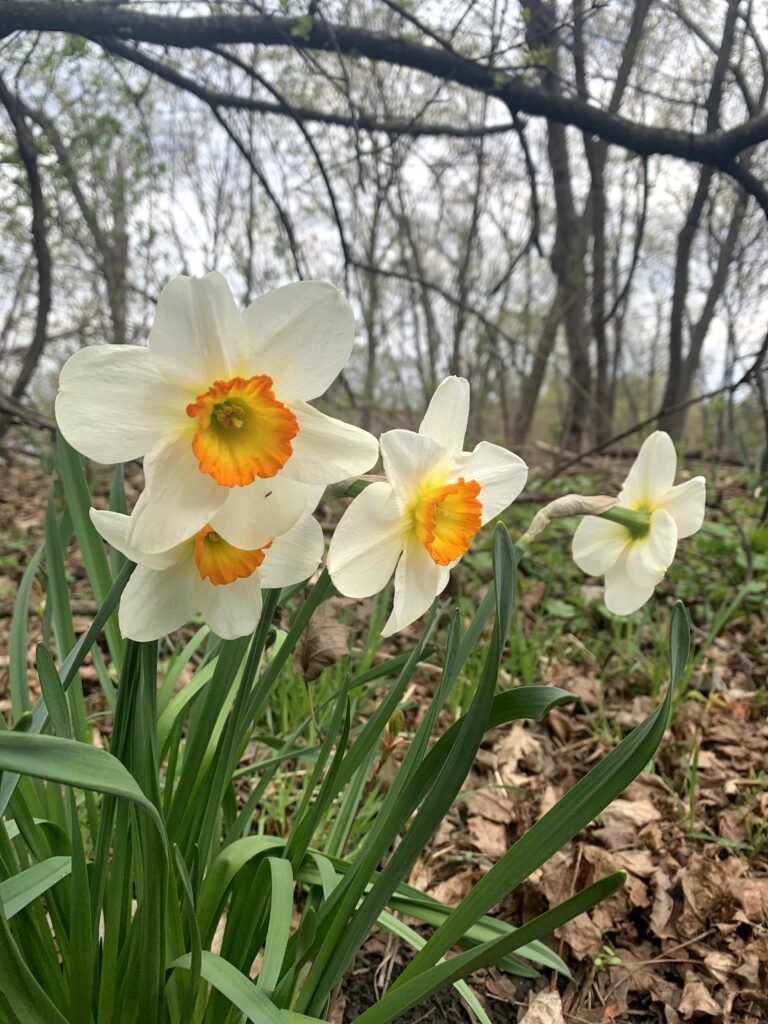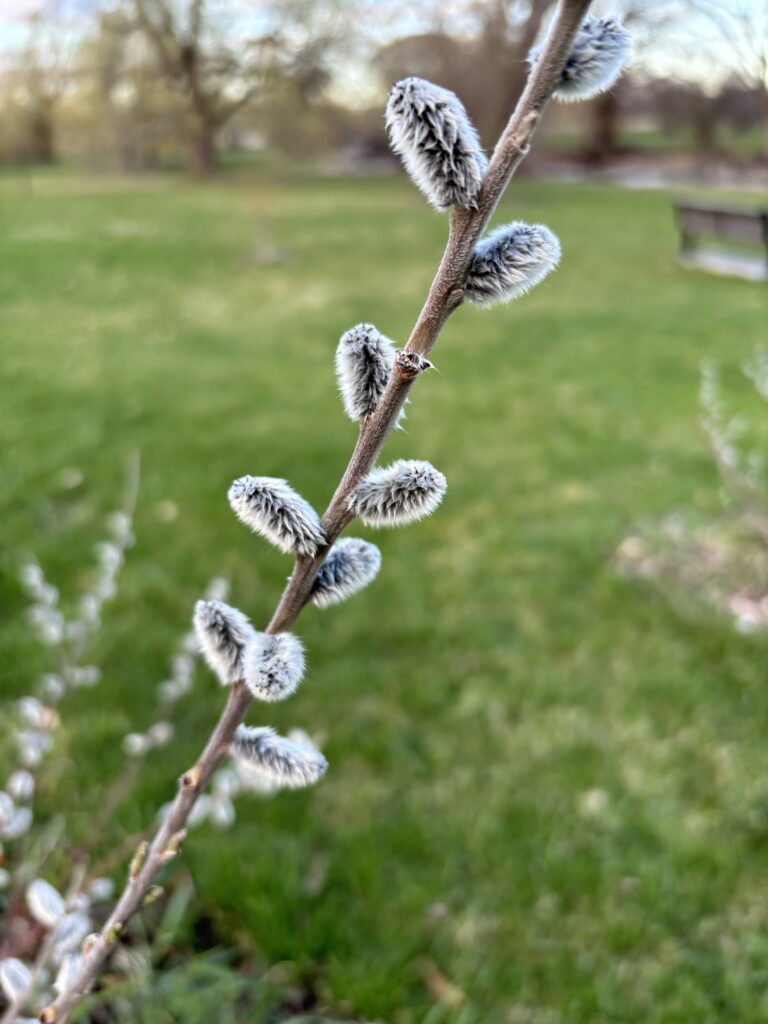I’ve always been passionate about the different plants blooming around us. I remember being in third grade, collecting samples of plants to research when I got home. I felt like I was a scientist as I typed “milkweed” and read on to why its sap was so sticky. I never grew out of this bewilderment of nature, and my fascination of its greenery.
Spring was never my favourite season. I grew up in the inner city, where we had dandelions and manure-scented fields. School wasn’t much help either, since we spent our recesses and lunch breaks standing around concrete. It wasn’t up until I lived in the thicket of Gatineau, that I truly fell in love with what spring had to offer. We watched the crabapple trees bloom and rain their petals overhead. Below are some wildflowers growing locally that are super fun to see on a hike or walk outdoors. Hope you enjoy spotting them as much as I did!
Wild Daffodils
Daffodils are one of the first bloomers of spring. They bloom annually and usually hang around for six weeks at a time. They’re also known for their ability to naturalize, which means they will spread and multiply on their own! They’re mostly observed with a bright hue of yellow but can be orange, white, cream and on the rare occasion, pink. And like so many of the plants الله has created, daffodils have been used medicinally for centuries. I enjoy spotting this flower now and then, admiring the vibrant and dissimilar colours it presents itself.
Fun Fact: Did you know that scientists use galantamine, a substance extracted from the bulb of the daffodil flower, to treat Alzheimer’s disease?
Hyacinth
Hyacinths are another popular spring flower, praised for its sweet smell and vibrant colours. Although I stumbled upon a pink bush, you might commonly find them a deep purple or lilac hue! If you’re able to get your hands on some, place them in a vase and have your room smell heavenly.
Fun Fact: Did you know Hyacinths are native to Turkey and the eastern Mediterranean coast?
Magnolia Tree
The Magnolia tree is one of my favourite blooms of the season. I remember seeing the beautiful pink tree for the first time and leaning over to smell the flowers, shocked at how similar they smelled to my favourite perfume. They are edible and are said to taste like ginger! Scientists say the Magnolia plant has existed for millions of years. And like so many of Allah’s creations, it has holistic properties too. Its bark is used globally to aid poor digestion and other ailments.
Fun Fact: The flowers of magnolia trees are structurally adapted for beetle pollination, with sturdy petals and a strong fragrance to attract these ancient pollinators. This unique evolutionary relationship highlights the resilience and adaptability of magnolia trees over millions of years.
Cornelian Cherry
These bright yellow bushes are hard to miss, but I never really noticed them until actively looking for spring’s early blooms. The Cornelian Cherry is grown and praised for its ornamental beauty, lining many gardens and properties as I type this now. The shrub produces small clusters of mustard-yellow flowers before the leaves emerge. These flowers are necessary to provide an early nectar source for bees! The photo I attached to the right is an interesting display of this shrub’s edible fruit! Although they’re not cherries, when fully ripe in late summer, the fruits have a tart flavour similar to sour cherries or cranberries.
Fun Fact: Carnelian cherries are used to make several tasty things, such as jams, jellies, syrups and sauces!
Pussy Willow
The Pussy Willow Shrub was a recent finding of mine. We had been walking in the Arboretum and I was taken aback by this strange-looking bush. I thought those buds were caterpillars! But these fuzzy tubes are the male flowers! It works like this; these buds appear in late winter and are fuzzy because of fine hairs that protect the developing flowers inside! As the fuzzy “pussies” mature, they release pollen which then fertilizes the female flowers nearby. I remember my husband asking me if plants were male and female like we were, and at the time I didn’t believe that was the case. But the more I researched, the more I understood that for some plants, pollination is dependent on the male and female parts of the same plant. In many flowering plants, for example, the male reproductive organs are the stamens, which produce pollen, while the female reproductive organs are the pistils, which contain the ovules.
I mention this in detail because Allah says in the Quran; “And it is He who sends down rain from the sky, and We produce thereby the growth of all things. We produce from it greenery from which We produce grains arranged in layers. And from the palm trees – of its emerging fruit are clusters hanging low. And [We produce] gardens of grapevines and olives and pomegranates, similar yet varied. Look at [each of] its fruit when it yields and [at] its ripening. Indeed in that are signs for a people who believe.” [6:99]
Pondering over the greatness of Allah’s creation, and tying it back to Him is a way of worshipping the one who created us. “Those who remember Allah while standing, sitting, and lying on their sides, and reflect on the creation of the heavens and the earth: ‘Our Lord, You have not created all this without purpose—You are far above that!—so protect us from the torment of the Fire.'” (3:191)
Fun Fact: Pussy Willows are valued by wildlife for their early pollen and nectar, making them important sources of food for bees and other pollinators as they emerge from winter dormancy.
















